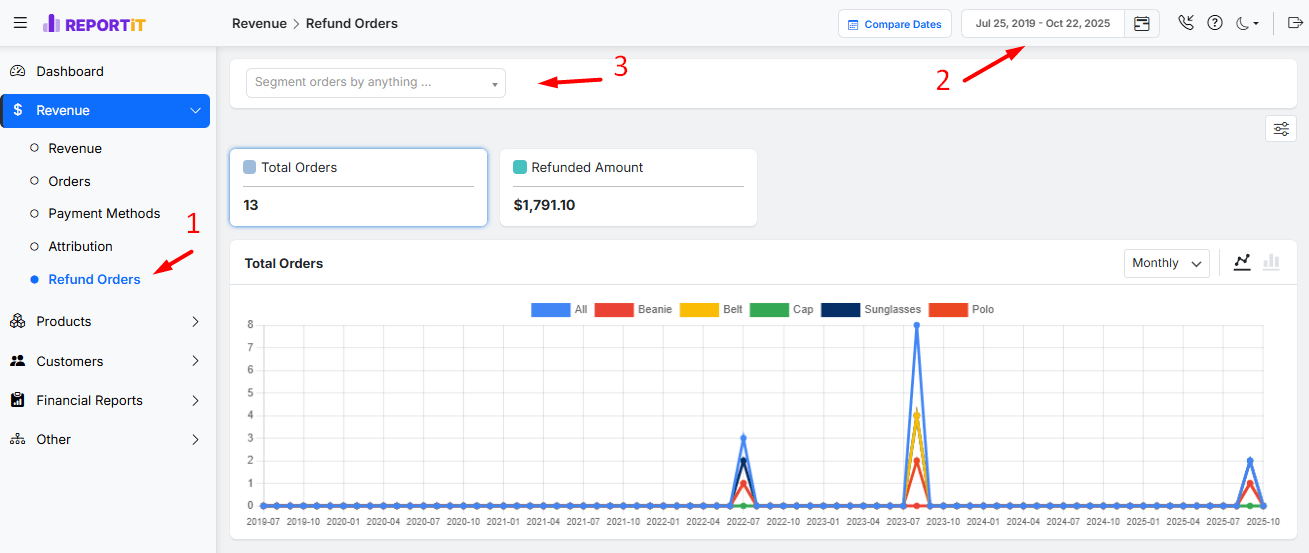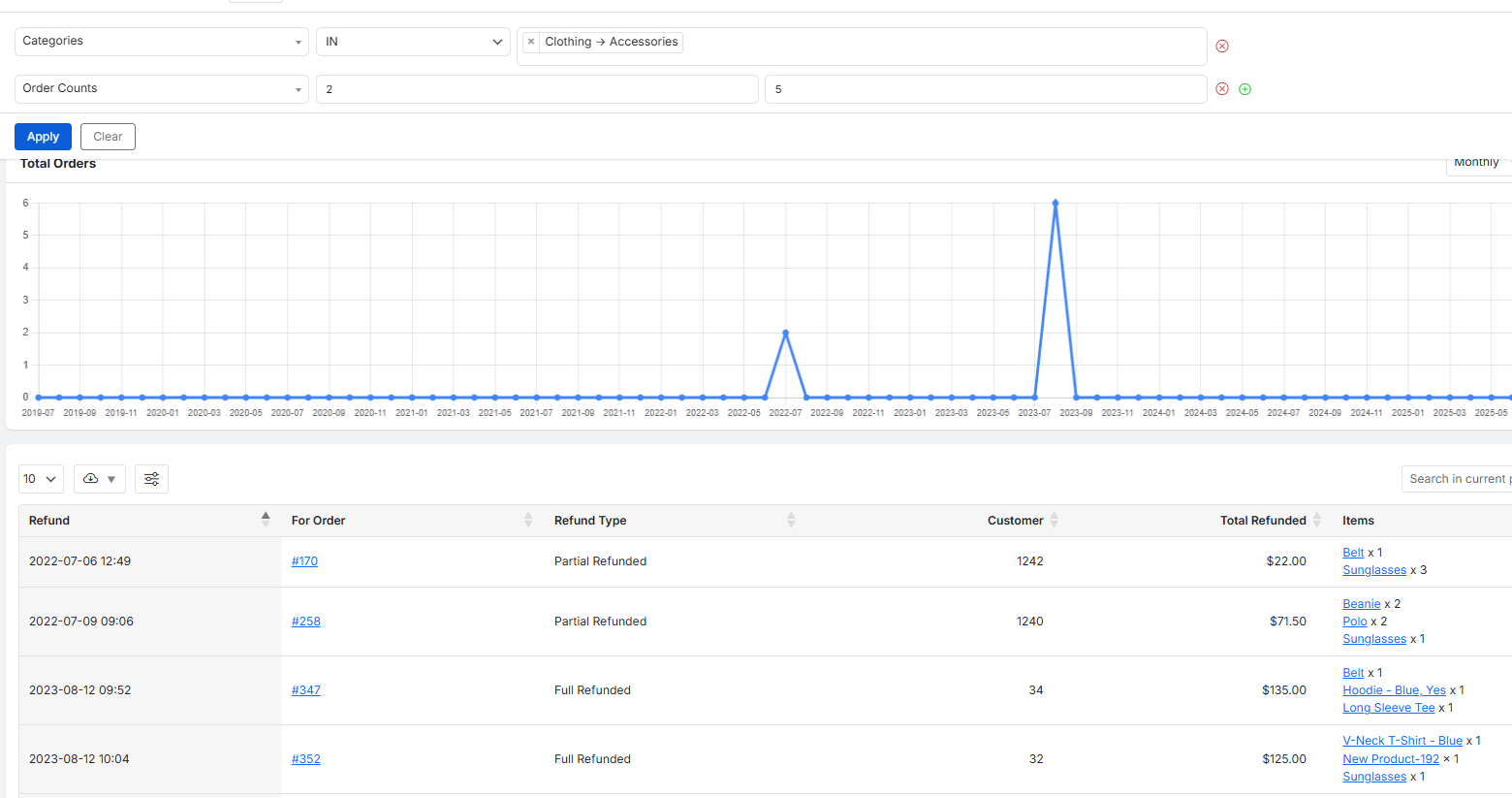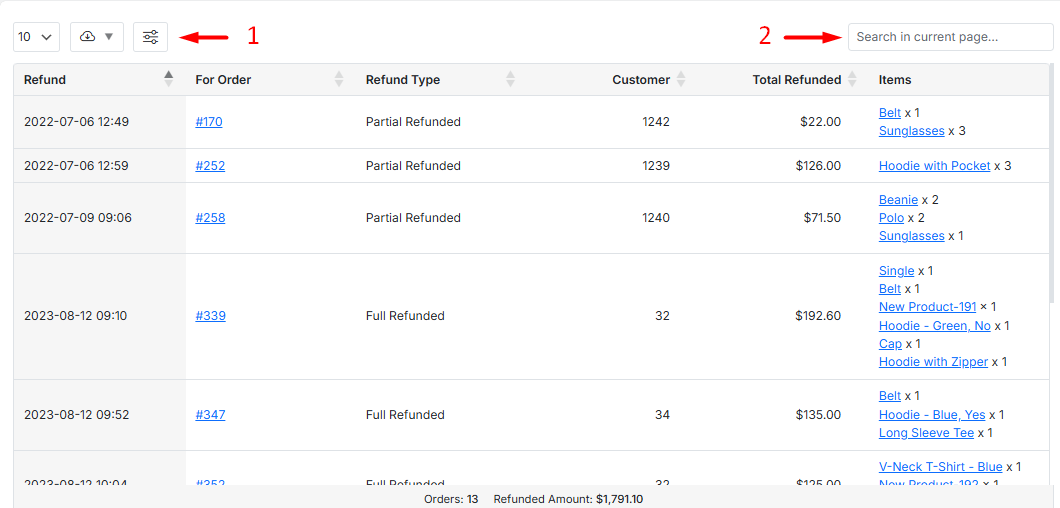Refunds are a natural part of e-commerce, but understanding their patterns is essential for safeguarding your net profit. The REPORTiT – Advanced Reporting for WooCommerce plugin helps you track refunded amounts, identify problematic products or customer behaviors, and see the direct financial impact on your bottom line, allowing you to make informed decisions to minimize future losses.
Analyze Refunded Report in REPORTiT plugin
To begin analyzing your refund orders, follow these three steps:
1. Go to Revenue> Refund Orders.
2. Select Your Date Range by using the date picker at the top to define the period you want to analyze. You can choose from a preset date range or set a custom range using a built-in calendar.
Read More: How to Use the Date Filter and Compare Performance Across Time Periods?
3. Use the available advanced filters to narrow down the refund report by specific criteria, including:
- Refund type: Filter refunded orders by full or partial refunds.
- Customer name: Find refunded orders for a specific customer.
- Product name: Focus on refunded orders that included a particular product.
- Categories /Tags: Filter refunded orders that contain a specific product category or tag.
- Attributes: Narrow down by product features like size or color.
- Order counts: View refunded orders based on the number of transactions.

For example, to filter for refunded orders with an order count between 2 and 5 that belong to the “Accessories” category, you would set these filters:
- Categories > In > Accessories
- Order Count > from 2 to 5

Once you’ve set your parameters, the report will present the data in three key sections.
Section 1: The Refund Order Report Summary
This section provides an immediate, high-level overview of the scale and financial impact of refunds in your store.
The key metrics that summarize your refund activity are:
- Total Orders: The total number of orders that included a refund.
- Refunded Amount: The total amount refunded to customers during the selected period.

Section 2: The Refund Order Report Trends Chart
This visual chart helps you identify trends and spikes in refund requests over time, which can be crucial for diagnosing underlying issues.
The chart graphically displays the metrics in the above section across your selected date range.
For instance, if you click on the Total Orders, you can review all orders that were refunded across your selected date range. This visualization makes it easy to spot if refunds are increasing or if there was a specific problem period.

You can adjust the time interval using the dropdown menu to view trends on a Monthly, Quarterly, or Yearly basis. This helps you see broader patterns that might be missed in a daily view.
Section 3: The Detailed Refunds Order Report Table
This section provides a granular, line-by-line breakdown of every refund, offering the complete context needed for a deep-dive analysis.
You can review detailed information for each refund order in the table, including:
- Refund (Refund date)
- For Order (The original Order ID)
- Refund Type (e.g., Full or Partial)
- Customer (Customer ID)
- Total Refunded (The monetary amount)
- Items (Which products were refunded)
How to customize the Refund Report?
Manage Columns: Use the “Columns management” button to show or hide specific data points in the table, creating a view that focuses on the information you need.
Search and Sort: Sort the table by columns like “Total Refunded” to quickly identify the largest refunds. Use the Search box to find specific orders or customers.
Export Data: Use the “Download” button to export the entire dataset to a CSV file for record-keeping or more advanced analysis in a spreadsheet application.
Read More: How to Export Reports for Further Analysis?


Comments